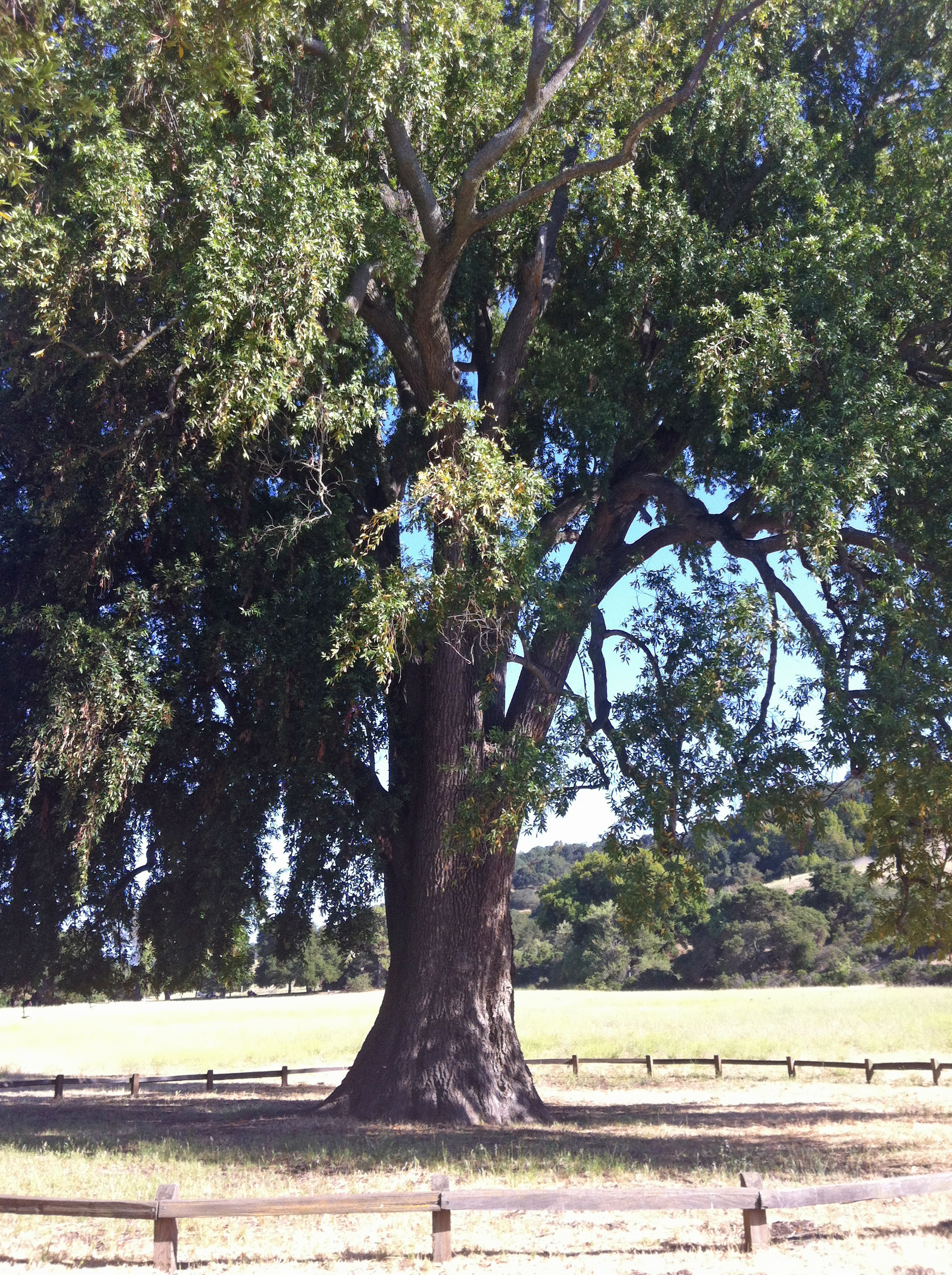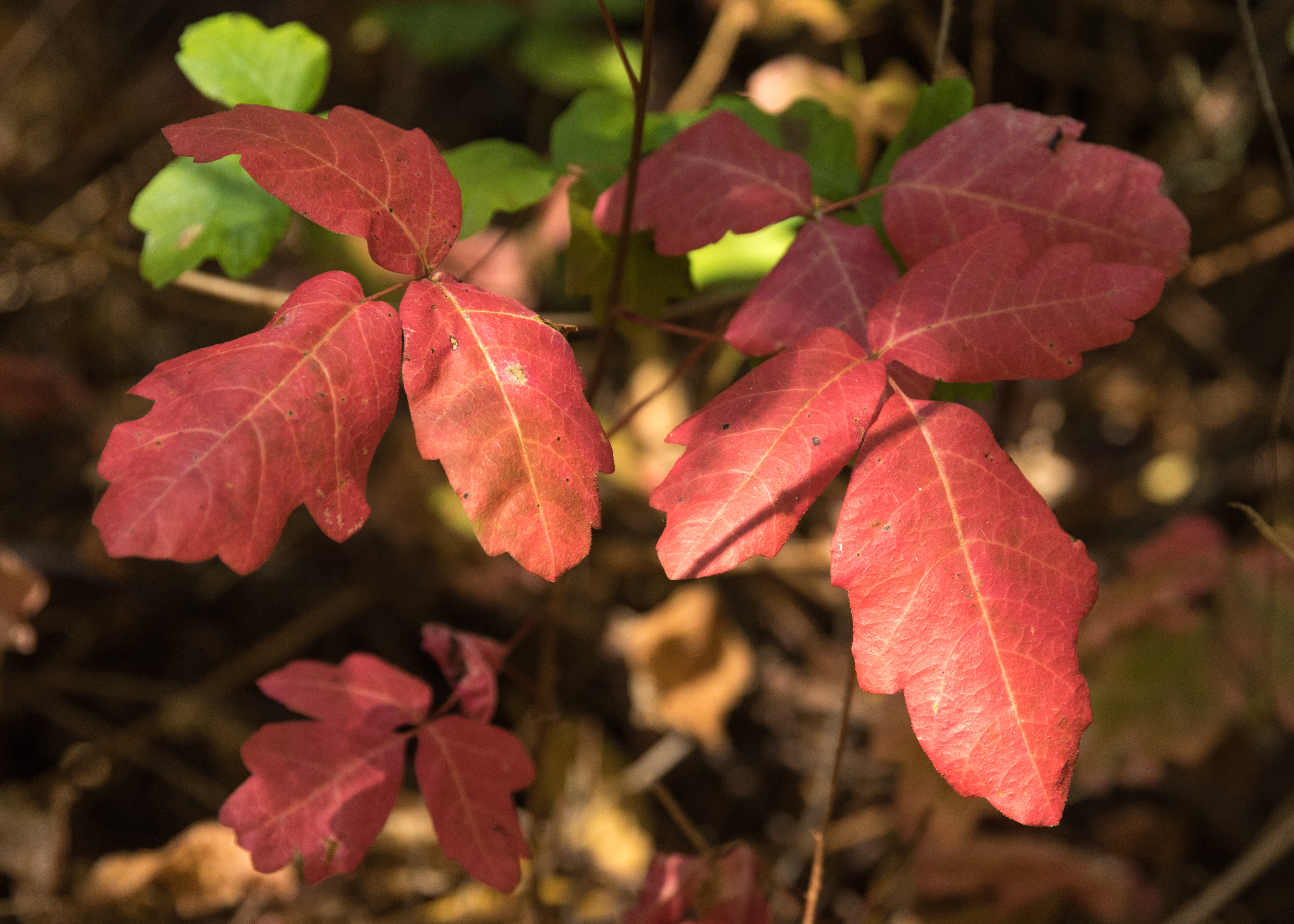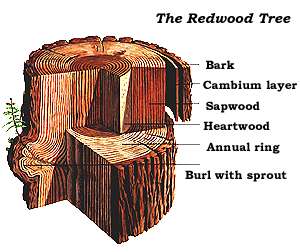|
Uvas Canyon County Park
Uvas Canyon County Park is a natural park located in upper Uvas Canyon on the eastern side of the Santa Cruz Mountains, west of Morgan Hill, California. The park has several small waterfalls, some of which flow perennially, that feed into tributaries Confluence, confluent with Uvas Creek. The park is part of the Santa Clara County Parks System, and facilitates picnics, hiking and overnight camping. It is one of the few parks in the area that allows dogs in the campgrounds. Access to Uvas Canyon County Park is via Croy Road, a two-lane paved secondary road off Uvas Road with no outlet that narrows to a single lane within the small private community of Sveadal, California, Sveadal, just before the park entrance. The park is located at 8515 Croy Rd, Morgan Hill. Uvas Canyon has 7.2 miles of hiking trails that includes a 1 mile Waterfall Loop. There are picnic areas and campsites as well. At one time Uvas Canyon was the tribal territory of the Mutsun Ohlone Indians. Uva is the S ... [...More Info...] [...Related Items...] OR: [Wikipedia] [Google] [Baidu] |
County Park
A county () is a geographic region of a country used for administrative or other purposesL. Brookes (ed.) '' Chambers Dictionary''. Edinburgh: Chambers Harrap Publishers Ltd, 2005. in some nations. The term is derived from the Old French denoting a jurisdiction under the sovereignty of a count (earl) or, in his stead, a viscount (''vicomte'').C. W. Onions (Ed.) ''The Oxford Dictionary of English Etymology''. Oxford University Press, 1966. Literal equivalents in other languages, derived from the equivalent of "count", are now seldom used officially, including , , , , , , , and Slavic '' zhupa''; terms equivalent to 'commune' or 'community' are now often instead used. When the Normans conquered England, they brought the term with them. Although there were at first no counts, ''vicomtes'' or counties in Anglo-Norman England, the earlier Anglo-Saxons did have earls, sheriffs and shires. The shires were the districts that became the historic counties of England, and given the same ... [...More Info...] [...Related Items...] OR: [Wikipedia] [Google] [Baidu] |
Umbellularia
''Umbellularia californica'' is a large hardwood tree native to coastal forests and the Sierra foothills of California, and to coastal forests extending into Oregon. It is the sole species in the genus ''Umbellularia''. The tree's pungent leaves have a similar flavor to bay leaves, though stronger, and it may be mistaken for bay laurel. The tree is endemic to the California Floristic Province. It is a host of the pathogen that causes sudden oak death. The dry wood has a color range from blonde (like maple) to brown (like walnut). It is considered an excellent tonewood and is sought after by luthiers and woodworkers. Description It is an evergreen tree growing to tall with a trunk up to in diameter. The largest recorded tree is in Mendocino County, California, and measured (as of 1997) in height with a spread. The thin bark is smooth and gray-brown when young, later turning reddish brown and scaly. The fragrant leaves are smooth-edged and lance-shaped, long and around a t ... [...More Info...] [...Related Items...] OR: [Wikipedia] [Google] [Baidu] |
Polystichum Munitum
''Polystichum munitum'', the western swordfern, is an evergreen perennial fern native to western North America, where it is one of the most abundant ferns in forested areas. It occurs along the Pacific coast from southeastern Alaska to southern California, and also inland east to southeastern British Columbia, northern Idaho and western Montana, with disjunctive populations in northern British Columbia, Canada; the Black Hills in South Dakota, United States; and Guadalupe Island off of Baja California, Mexico. Western swordfern is known to have locally naturalized in parts of Great Britain and Ireland. Description The dark green fronds of this fern grow tall, in a tight clump spreading out radially from a round base. They are single-pinnate, with the pinnae alternating on the stalk. Each pinna is long, with a small upward-pointing lobe (a sword hilt, hence the name) at the base, and the edges are serrated with bristly tips on the serrations. Beyond the upward-pointing lobe, the ... [...More Info...] [...Related Items...] OR: [Wikipedia] [Google] [Baidu] |
Diplacus Aurantiacus
''Diplacus'' is a genus of flowering plants in the family Phrymaceae, which was traditionally placed in family Scrophulariaceae. It includes 49 species native to the western United States and northwestern Mexico. Most prefer dry and rocky areas. The genus ''Diplacus'' was first described by Thomas Nuttall in 1838. It was merged into ''Mimulus'' no later than 1905, until the 2012 restructuring. The 2012 restructuring of ''Mimulus'' by Barker, ''et al''., based largely upon DNA evidence, left seven species in ''Mimulus'', placed 111 into ''Erythranthe'' (species with axile placentation and long pedicels), placed 46 into ''Diplacus'' (species with parietal placentation and sessile flowers), placed two in '' Uvedalia'', and placed one each in '' Elacholoma'', '' Mimetanthe'', and '' Thyridia''. Species 49 species are accepted. [...More Info...] [...Related Items...] OR: [Wikipedia] [Google] [Baidu] |
Toxicodendron Diversilobum
''Toxicodendron diversilobum'' (syn. ''Rhus diversiloba''), commonly named Pacific poison oak or western poison oak, is a woody vine or shrub in the sumac family, Anacardiaceae. It is widely distributed in western North America, inhabiting conifer and mixed broadleaf forests, woodlands, grasslands, and chaparral biomes.C. Michael Hogan (2008)"Western poison-oak: ''Toxicodendron diversilobum''", GlobalTwitcher, ed. Nicklas Strömberg Peak flowering occurs in May. Like other members of the genus '' Toxicodendron'', ''T. diversilobum'' causes itching and allergic rashes in most people after contact by touch or smoke inhalation. Despite its name, it is not closely related to oaks, nor is it a true tree. Description ''Toxicodendron diversilobum'' is extremely variable in growth habit and leaf appearance. It grows as a dense tall shrub in open sunlight, a treelike vine and may be more than long with an trunk, as dense thickets in shaded areas, or any form in between. It re ... [...More Info...] [...Related Items...] OR: [Wikipedia] [Google] [Baidu] |
Claytonia Perfoliata
''Claytonia perfoliata'', commonly known as miner's lettuce or winter purslane, is a flowering plant in the family Montiaceae. It is an edible, fleshy, herbaceous, annual plant native to the western mountain and coastal regions of North America. Description ''Claytonia perfoliata'' is a tender rosette-forming plant that grows to some in height, but mature plants can be as short as . The cotyledons are usually bright green (rarely purplish- or brownish-green), succulent, long and narrow. The first true leaves form a rosette at the base of the plant, and are long, with a typically long petiole (exceptionally up to long). The small pink or white flowers have five petals long. The flowers appear from February to May or June and are grouped 5–40 together. The flowers grow above a pair of leaves that are connected together around the stem so as to appear as a single circular leaf. Mature plants form a rosette; they have numerous erect to spreading stems that branch from the bas ... [...More Info...] [...Related Items...] OR: [Wikipedia] [Google] [Baidu] |
Arbutus Menziesii
''Arbutus menziesii'', or Pacific madrone (commonly madrone or madrona in the United States and arbutus in Canada), is a species of broadleaf evergreen tree in the family Ericaceae. It has waxy foliage, a contorted growth habit, and flaky bark. It is native to the western coastal areas of North America, from British Columbia to California. Description ''Arbutus menziesii'' is an evergreen tree about in height, but in the right conditions up to . The trunk is usually about thick. The thin bark is a rich orange-red, and when mature naturally peels away in thin sheets, leaving a greenish, silvery appearance that has a smooth satin sheen. Older trunks are gray-brown near the base. Individual trees can live for over 300 years. The leaves are thick with a waxy texture, elliptical, long and broad, arranged spirally; they are glossy dark green above and a lighter, more grayish green beneath, with an entire margin. The leaves are evergreen, lasting a few years before detaching. So ... [...More Info...] [...Related Items...] OR: [Wikipedia] [Google] [Baidu] |
Pentagramma Triangularis
''Pentagramma'' is a small genus of North American ferns in the family Pteridaceae. Until 1990 members of this genus were included in ''Pityrogramma'', and there has been considerable disagreement regarding the species' taxonomy. In the most recent treatment, six diploid species are recognized. The distribution of ''P. triangularis'' (goldback fern) extends from British Columbia through the western United States into Baja California in northwestern Mexico.C.Michael Hogan, ed. 2010.‘’Pentagramma triangularis’’ . Encyclopedia of Life./ref> ''Pentagramma maxonii'' occurs in New Mexico, Arizona, Sonora, Baja California Sur, California, and Baja California. All other species are restricted to California and Baja California. Members of the genus ''Pentagramma'' produce a powdery-waxy secretion on their lower leaf surfaces, called Epicuticular wax#Farina, farina. This character is shared with the related genus ''Notholaena''and other members of the Cheilanthoideae. Species , ... [...More Info...] [...Related Items...] OR: [Wikipedia] [Google] [Baidu] |
Pseudotsuga Menziesii
The Douglas fir (''Pseudotsuga menziesii'') is an evergreen conifer species in the pine family, Pinaceae. It is the tallest tree in the Pinaceae family. It is native plant, native to western North America and is also known as Douglas-fir, Douglas spruce, Oregon pine, and Columbian pine. There are three varieties: coast Douglas-fir (''P. menziesii'' var. ''menziesii''), Rocky Mountain Douglas-fir (''P. menziesii'' var. ''glauca'') and Mexican Douglas-fir (''P. menziesii'' var. ''lindleyana''). Despite its common names, it is not a true fir (genus ''Fir, Abies''), spruce (genus ''Spruce, Picea''), or pine (genus ''Pine, Pinus''). It is also not a Tsuga, hemlock; the genus name ''Pseudotsuga'' means "false hemlock". Description Douglas-firs are medium-sized to extremely large evergreen trees, tall (although only coast Douglas-firs reach heights near 100 m) and commonly reach in diameter, although trees with diameters of almost exist. The largest coast Douglas-firs regularl ... [...More Info...] [...Related Items...] OR: [Wikipedia] [Google] [Baidu] |
Baccharis
''Baccharis'' is a genus of perennial plant, perennials and shrubs in the Asteraceae, aster family (Asteraceae). They are commonly known as baccharises but sometimes referred to as "brooms", because many members have small thin leaves resembling the true broom (shrub), brooms. They are not at all related to these however, but belong to an entirely different lineage of eudicots. ''Baccharis halimifolia, B. halimifolia'' is commonly known as "groundsel bush", however true groundsels are found in the genus ''Senecio''. ''Baccharis'', with over 500 species, is one of the largest genera in the Asteraceae. It is found throughout the Americas, distributed mainly in the warmer regions of Brazil, Argentina, Colombia, Chile and Mexico, with ''B. halimifolia'' ranging northward along the Atlantic Coast to the southern tip of Nova Scotia in Canada. If present, the leaves of ''Baccharis'' are borne along the stems in alternate fashion. Flowers are usually white or pinkish. There are no ray f ... [...More Info...] [...Related Items...] OR: [Wikipedia] [Google] [Baidu] |
Dryopteris Arguta
''Dryopteris arguta'', with the common name coastal woodfern, is a species of Dryopteris, wood fern. It is native to the west coast and western interior mountain ranges of North America, from British Columbia, throughout California, and into Arizona. It grows between sea level and . It is found in California mixed evergreen forest, mixed evergreen forests, California oak woodland, oak woodlands, and shady lower elevation slopes in California chaparral and woodlands, chaparral and woodlands habitats. Description ''Dryopteris arguta'' is somewhat variable in appearance. Leaflets sometimes turn at an angle from the leaf, giving it a ruffled or lacy look, and the toothed leaflets may have bristles at their tips. According to C. Michael Hogan, the thin concave indusium, indusia are quite closely spaced and almost entirely cover the sporangia.C. Michael Hogan. 2008''Coastal Woodfern (Dryopteris arguta)'', GlobalTwitcher, ed. N. Stromberg References External linksJepson Manual — ' ... [...More Info...] [...Related Items...] OR: [Wikipedia] [Google] [Baidu] |
Sequoia Sempervirens
''Sequoia sempervirens'' ()''Sunset Western Garden Book,'' 1995: 606–607 is the sole living species of the genus ''Sequoia (genus), Sequoia'' in the cypress family Cupressaceae (formerly treated in Taxodiaceae). Common names include coast redwood, coastal redwood and California redwood. It is an evergreen, long-lived, monoecious tree living 1,200–2,200 years or more. This species includes the List of tallest trees, tallest living trees on Earth, reaching up to in height (without the roots) and up to in diameter at breast height. These trees are also among the List of oldest trees, longest-living trees on Earth. Before commercial logging and clearing began by the 1850s, this massive tree occurred Native species, naturally in an estimated along much of coastal California (excluding southern California where rainfall is not sufficient) and the southwestern corner of coastal Oregon within the United States. Being the tallest tree species, with a small range and an extremely ... [...More Info...] [...Related Items...] OR: [Wikipedia] [Google] [Baidu] |



